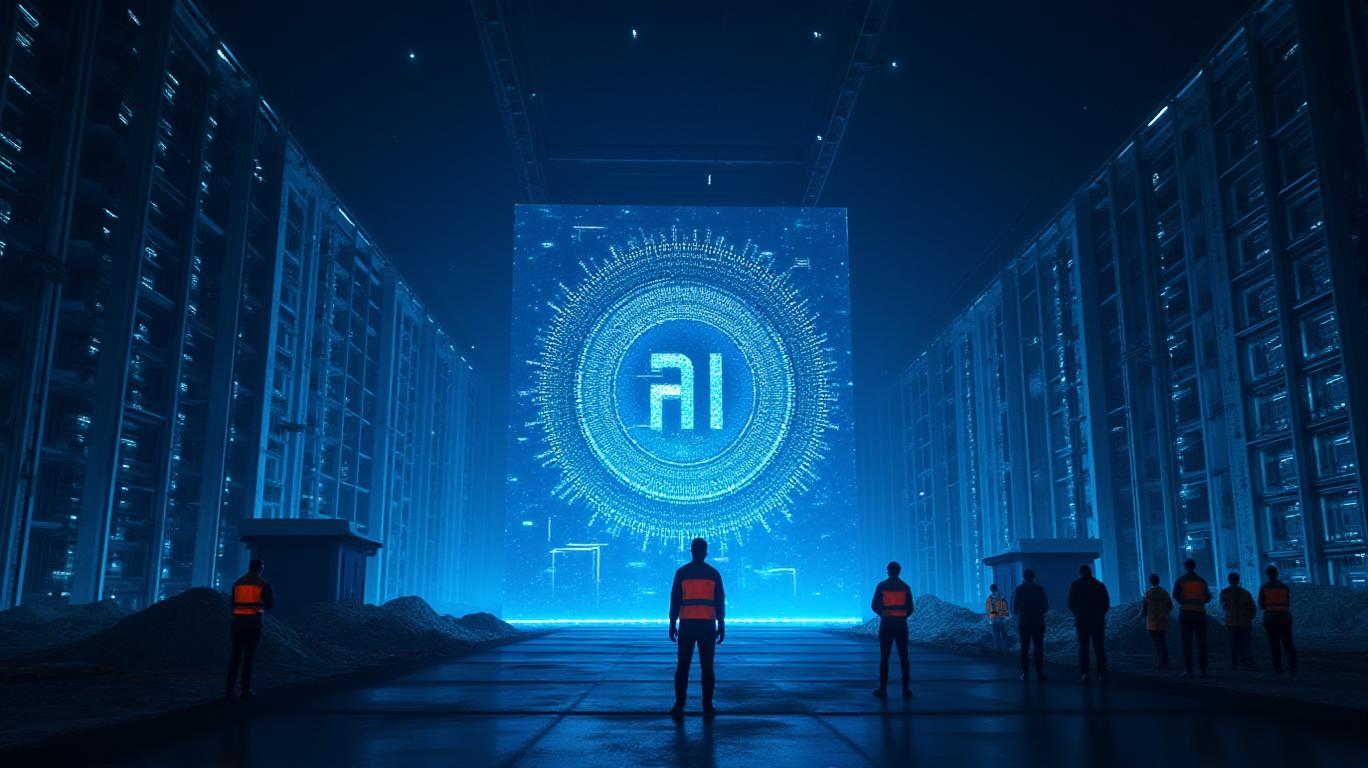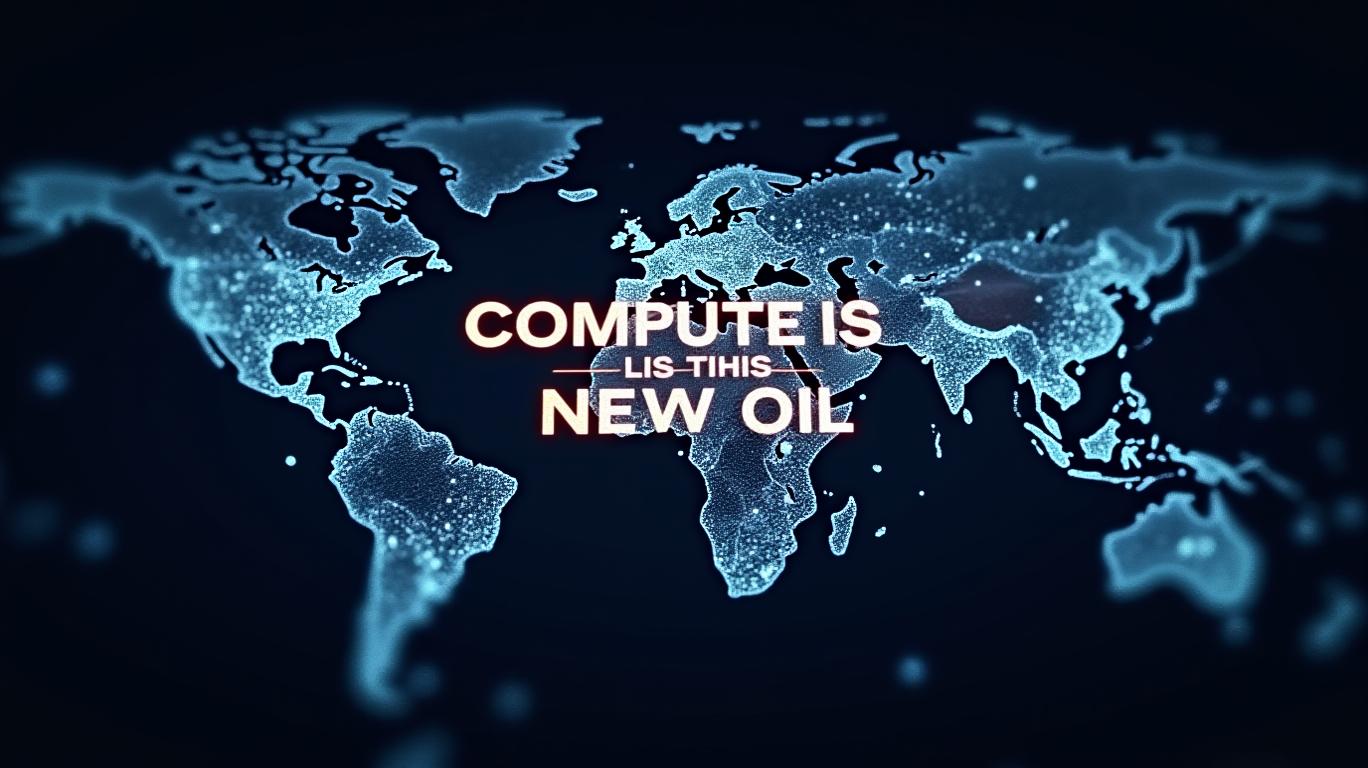JPMorgan’s $7 Billion AI Infrastructure Gamble: Why OpenAI’s Data Centers Are the New Oil
The race to dominate artificial intelligence has entered a new phase, and the battlefield is now the data center. JPMorgan Chase’s $7+ billion loan to OpenAI—part revolving credit facility, part strategic bet on the future of computing—is no mere financial transaction. It’s a declaration of war in the AI arms race. This is infrastructure as power: the servers, chips, and data pipelines that will determine who controls the next generation of AI. Investors who ignore this move risk missing the mother of all infrastructure plays.

The Infrastructure Imperative: Why Data Centers Are the New Oil
OpenAI’s Texas-based data center project in Abilene, fueled by this JPMorgan-backed funding, isn’t just a building. It’s a fortress of compute power. The $15 billion total investment (including equity and debt) will expand the facility from two to eight buildings, each packed with 50,000 Nvidia Blackwell chips. These are the engines that train the next generation of large language models—think of them as the refineries of AI’s "oil": raw computational power.
The valuation of OpenAI has skyrocketed from $30 billion to $157 billion in two years, but this $7 billion loan isn’t just about valuation—it’s about control. By securing independent data infrastructure, OpenAI cuts its reliance on Microsoft’s Azure cloud. This is strategic autonomy at scale, and JPMorgan is bankrolling it.
The Terms Tell a Story: Why 6% Interest Rates Are a Masterstroke
The credit facility’s terms are a masterclass in financial engineering. The SOFR +100 basis point rate (~6% at issuance) might seem high in a rising rate environment, but it’s a steal for OpenAI. Why? Because this isn’t a loan—it’s a venture capital play in debt form. The three-year draw period and unsecured nature mean OpenAI can scale compute infrastructure without ceding equity. Compare this to traditional tech IPOs that dilute founders: JPMorgan is getting a stake in the future of AI without a single share.
Meanwhile, JPMorgan isn’t just a lender—it’s positioning itself as the banker to the AI revolution. This loan isn’t on its balance sheet; it’s a calling card to other tech giants hungry for compute infrastructure.
The Stargate Play: $500 Billion Infrastructure Networks Are the New Railroads
OpenAI isn’t building in a vacuum. The "Stargate" initiative—a $500 billion partnership with SoftBank and Oracle—reveals the endgame: a global network of AI infrastructure. JPMorgan’s $2.3 billion loan for Oracle’s Abilene data center (part of this ecosystem) isn’t an accident. This is the AI equivalent of the Transcontinental Railroad—a physical network that will carry the freight of the 21st century economy.
Investors should note: infrastructure plays this massive don’t fail quietly. The Abilene project’s 206-megawatt capacity is just the start. With demand for AI compute growing at 100x annual rates, these data centers will be the choke points of innovation. Control the compute, control the AI.
Why Act Now? The Tipping Point is Nearing
The skeptics will cite AI’s current limitations—its inability to reliably perform real-world tasks—but they’re missing the bigger picture. Infrastructure investment isn’t about today’s models; it’s about the models of 2030. OpenAI’s $15 billion data center isn’t just for GPT-5—it’s for systems we can’t even imagine yet.
The hardware-software-infrastructure stack is compounding. Every dollar poured into data centers today multiplies into exponential gains as models improve. JPMorgan’s loan isn’t a bet on OpenAI—it’s a bet on the entire AI stack becoming a utility. And utilities, when properly scaled, become monopolies.
The Investment Case: Buy the "Compute Tap"
The playbook is clear: own the infrastructure that feeds the AI beast. For investors, this means:
- Direct Exposure: OpenAI’s eventual IPO (or spin-off plays like Anthropic) will reward early believers.
- Banker Plays: JPMorgan’s strategic positioning in AI finance is a secular growth story.
- Hardware Plays: NVIDIA’s chip dominance and companies like CoreWeave (now valued at $23 billion) are the unsung heroes of this infrastructure boom.
This isn’t just about OpenAI. It’s about the dawn of an AI-powered economy where compute is the new electricity. The $7 billion loan isn’t a blip—it’s a bellwether. The question isn’t whether to invest, but how fast you can get your capital into the pipelines before the taps run dry.
The next trillion-dollar companies won’t be built in Silicon Valley offices—they’ll be built in the data centers of Abilene, Texas. And the clock is ticking.


Comments
No comments yet